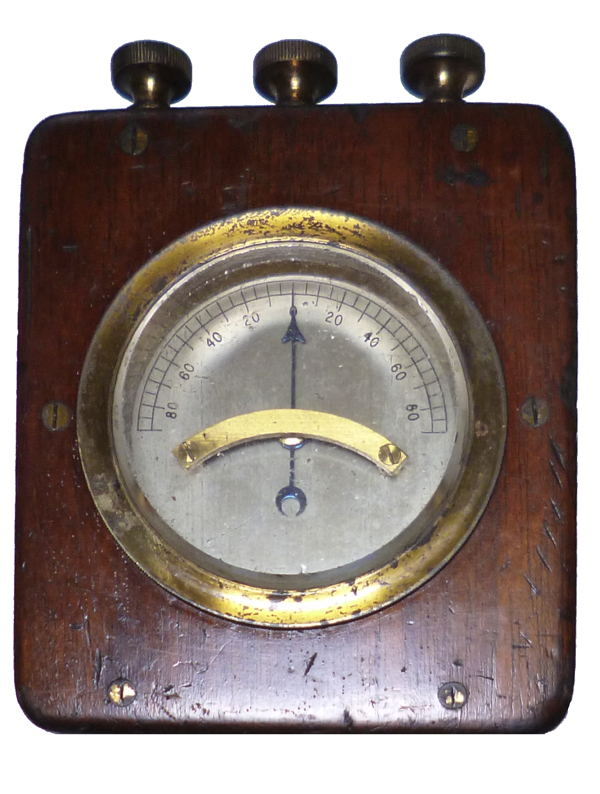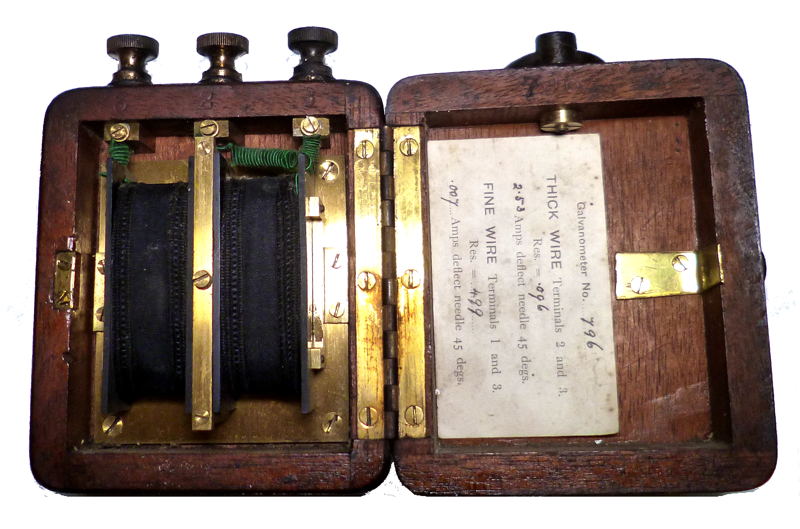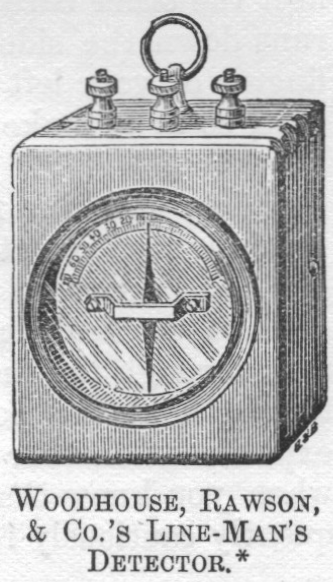



Telegraph Lineman's Galvanometer would have been used as the basic diagnostic tool by telegraph linemen. Generally used for testing for current on telegraph circuits or in conjunction with a battery for testing continuity. A horizontal axle carries an indicator in front of the dial and a magnetised needle inside, located between two coils. Also known as a linesmen detector or Q&I detector. They generally had two sensitivities the Quantity or Q coil with a low resistance to measure current and a high resistance Intensity or I coil to measure voltage.
The following is an extract from "Elementary Manual of Magnetism and Electricity" by Professor Jamieson published in 1897. This is one of the books that my grandfather used when studying Electrical Engineering at the Elswick Institute in 1900.
In the next figure we have given an outside viewof the form which the galvanometer takes, when supplied to the Telegraph or Telephone Line-Man, or to the Electrical Engineer, as a simple portable detector or rough-and-ready measurer of the presence, direction, and strength of electric currents; for it is advisable that elementary students should be able to recognise at a glance the names and the uses not only of the instruments adopted in the class-room and laboratory, but also of the corresponding instruments employed 1n the practical applications of electricity. All that the operator has to do in order to use such apparatus is to join the outstanding terminals to the two ends of a circuit (or one end of the leading wire, or the telegraph line to one terminal, and the other terminal to the Earth **) in order to detect whether a current is passing or the circuit is complete. If he observes any deflection of the needle (whether to the right or to the left), he thereby understands from a previous test the direction of the current, and from the number of degrees deflection which the needle gives he obtains an approximate idea of the strength of the current.

* The three terminals on this instrument are connected up with two sets of coils, the one a thick wire of short length, and the other a ‘finer wire of long length, to suit different lengths of circuits.
**The technical sense in which the word “Earth ” is used by
electricians will be fully explained later on. Here it may be taken to
mean a connection between the galvanometer and a water or gas pipe or a
plate sunk in damp soil or in a pond.
This lovely old meter is one of a number of instruments given to me by Martin Harrison which belonged to his father who was a a Chartered Electrical Engineer. He collected both old electrical test equipment and due to his name (John Harrison) old clocks. Martin thought his father would have been pleased with his items been given a new home and owner.
I have given it a clean and light polish
and found that both windings are OK and that the pointer deflects when
the meter is energised. It has to be used in the vertical position.

